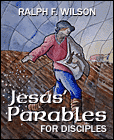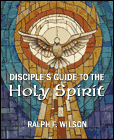Free E-Mail
Bible Studies
Beginning the Journey (for new Christians). en Español
Old Testament
Abraham
Jacob
Moses
Joshua
Gideon
David, Life of
Elijah
Psalms
Solomon
Songs of Ascent (Ps 120-135)
Isaiah
Advent/Messianic Scriptures
Daniel
Rebuild & Renew: Post-Exilic Books
Gospels
Christmas Incarnation
(Mt, Lk)
Sermon on the Mount
(Mt 5-7)
Mark
Luke's
Gospel
John's Gospel
7 Last Words of Christ
Parables
Jesus and the Kingdom
Resurrection
St. Peter
Acts
The Early Church
(Acts 1-12)
Apostle Paul
(Acts 12-28)
Paul's Epistles
Christ Powered Life (Rom 5-8)
1 Corinthians
2 Corinthians
Galatians
Ephesians
Vision for Church
(Eph)
Philippians
Colossians,
Philemon
1
& 2 Thessalonians
1 & 2 Timothy,
Titus
General Epistles
Hebrews
James
1 Peter
2 Peter, Jude
1, 2, and 3 John
Revelation
Revelation
Conquering Lamb of Revelation
Topical
Glorious Kingdom, The
Grace
Great Prayers
Holy Spirit, Disciple's Guide
Humility
Lamb of God
Listening for God's Voice
Lord's Supper
Names of God
Names of Jesus
Christian Art
About Us
Speaking
Contact Us
Dr. Wilson's Books
Donations
Watercolors
Sitemap
 Colbert Gauthier, 'St. Mark the Evangelist' (2024), used by permission of the artist. Larger image. Behind St. Mark is the Lion, his traditional symbol. |
When we survey the Four Gospels, we find an interesting phenomenon. In Matthew, Mark, and Luke, we often find parallels, many times nearly exact verbal parallels. These three Gospels are called the Synoptic Gospels because they generally share the same view. Our word "synoptic" is from Greek synoptikos, "seeing the whole together, taking a comprehensive view."
John's Gospel, which I believe was written in the 90s AD by the Apostle John himself, is more thoughtful and reflective, with relatively few parallels with Matthew, Mark, and Luke, and even fewer verbal parallels.
The so-called "Synoptic Problem" deals with the interrelationships between the Synoptic Gospels. It explores the question: How do you account for the similarities and differences in wording and content? This is not a liberal or conservative question. There is a clear phenomenon in the Scriptures for all to see. So how do we understand it? Here are some approaches:
1. Repeated teachings. First, realize that Jesus taught in numerous villages and towns up and down the land, most of the time with his disciples in tow. They heard the same teachings, stories, and parables numerous times, often with Jesus' variations to personalize it for a particular audience. One example is the Parable of the Talents (Matthew 25:14-30) and the Parable of the Minas or Pounds (Luke 19:11-27).
2. Ancient literary standards. Next, be aware that in ancient times historians worked differently than historians in our day. Here is a quote from ancient Athenian historian Thucydides (460-400 BC) on how he reported speeches.
"Some I heard myself, others I got from various quarters; it was in all cases difficult to carry them word for word in one's memory, so my habit has been to make the speakers say what was in my opinion demanded of them by the various occasions, of course adhering as closely as possible to the general sense of what they really said."[1]
In our day, we're careful to put exact quotes in quotation marks, but it isn't fair to impose our standards on ancient authors. We don't know exactly how conversations in the Gospels were recovered and transcribed, but we believe they were inspired by the Spirit as they wrote.
3. Sources. In many instances the wording is nearly or exactly the same. How do we understand this? We can only speculate. One theory is that in the early days of the Church there existed a written "sayings source," referred to by scholars as Q (for German Quelle, "source"). Another theory (not as likely, in my opinion) is that an Ur-Gospel[2] (or proto-gospel) was written in Aramaic in the 30s AD and drawn upon by the Gospel writers. Alternatively, Mark is seen as the first Gospel written that influenced Matthew and Luke. It is obvious, however, that both Matthew and Luke also draw on their own unique materials.
4. Purpose and audience. Finally, each of the Gospel writers has his own purpose and audience. For example, Matthew seems clearly written for Jewish readers, Luke more for Gentiles. As editors, they pick and choose between the materials at hand to weave the story under the Spirit's guidance for their particular audience. As John put it,
"There are also many other things that Jesus did. Were every one of them to be written, I suppose that the world itself could not contain the books that would be written." (John 21:25)
To conclude, there are clearly some complex relationships between the Synoptic Gospels. How are we to explain them? Often, the best answer is: we don't really know for sure.
Endless speculation about the exact nature of the relationships between the Synoptic Gospels doesn't seem helpful. When commentators spend a lot of time on it, and base their interpretations of the text on their speculations, I see it as a distraction to the real task.
I believe that the Spirit-inspired Gospel writers drew upon various sources available to them and shaped their Gospels as the Spirit led. Our goal should be to focus on the text of each Gospel as it has come down to us and see what the Spirit has for us there.
Further Reading
You can find out more about the Synoptic Problem from these sources:
Amin D. Baum, "Synoptic Problem," in Joel B. Green, Jeannine K. Brown, and Nicholas Perrin (editors), Dictionary of Jesus and the Gospels, Second Edition (IVP Academic, 2013), pp. 911-919.
Floyd V. Filson, "Gospels, Synoptic," in Geoffrey W. Bromiley (general editor), The International Standard Bible Encyclopedia, (Eerdmans, 1979-1988) 2:532-536.
"Hebrew Gospel Hypothesis," Wikipedia article (https://en.wikipedia.org/wiki/Hebrew_Gospel_hypothesis).
"Synoptic Gospels," Wikipedia article (https://en.wikipedia.org/wiki/Synoptic_Gospels).
[1] Thucydides, The Peloponnesian War 1.22.1.
[2] The German prefix ur- means, "earliest, original."
Disciple Lessons from the Fisherman
Copyright © 2025, Ralph F. Wilson. <pastor![]() joyfulheart.com> All rights reserved. A single copy of this article is free. Do not put this on a website. See legal, copyright, and reprint information.
joyfulheart.com> All rights reserved. A single copy of this article is free. Do not put this on a website. See legal, copyright, and reprint information.

|

|
In-depth Bible study books
You can purchase one of Dr. Wilson's complete Bible studies in PDF, Kindle, or paperback format -- currently 48 books in the JesusWalk Bible Study Series.
Old Testament- Abraham, Faith of
- Jacob, Life of
- Moses the Reluctant Leader
- Joshua
- Gideon
- David, Life of
- Elijah
- Psalms
- Solomon
- Songs of Ascent (Psalms 120-134)
- Isaiah
- 28 Advent Scriptures (Messianic)
- Daniel
- Rebuild & Renew: Post-Exilic Books
Gospels
- Christmas Incarnation (Mt, Lk)
- Sermon on the Mount (Mt 5-7)
- Luke's Gospel
- John's Gospel
- Seven Last Words of Christ
- Parables
- Jesus and the Kingdom of God
- Resurrection and Easter Faith
- St. Peter
Acts
Pauline Epistles
- Romans 5-8 (Christ-Powered Life)
- 1 Corinthians
- 2 Corinthians
- Galatians
- Ephesians
- Philippians
- Colossians, Philemon
- 1 & 2 Thessalonians
- 1 &2 Timothy, Titus
General Epistles
Revelation
Topical
